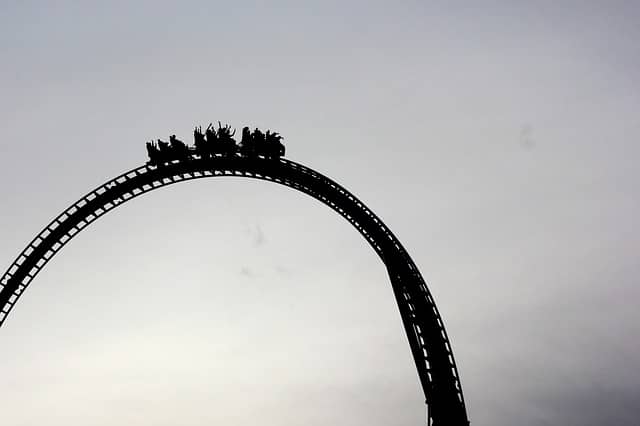[vc_row css=”.vc_custom_1655389395144{padding-top: 15px !important;padding-right: 60px !important;padding-left: 60px !important;}”][vc_column][vc_column_text]
When investors talk about volatility, they are usually referring to losses in markets. Volatility, however, can also be defined as disorderly moves upwards in stocks as well. Below is our new video on passive investing, where we explain why passive is increasing volatility and we may be nearing a tipping point where volatility explodes in both directions.
Youtube Video on Passive Investing
Passive Momentum
Our research on passive investing concludes: we have gone from a market structure where active managers seek to buy at low valuations and sell at high ones, which limits moves in any one direction, to a market structure where passive strategies buy without regards to valuation and buy more if percentage weightings increase. The US stock market is now a momentum strategy, where companies increasing in price become more heavily weighted in indexes, which requires indexers to buy more, creating a feedback loop of buying momentum. Alarmingly, the higher passive market share becomes, the more volatility will increase, both on the upside and downside.
How Passive Increases Volatility
Passive strategies currently represent over 40% of all professionally managed money. Their market share has increased every year in the past decade and is now the dominant force on Wall Street. Continuously increasing market share means passive strategies have never had to sell! Instead, the daily inflows require passive firms to consistantly place buy orders. Once a passive firm owns a share of stock, it is held indefinitely, or at least until there is a net-outflow from clients redeeming their money. This increases volatility because the available pool of equities for passive purchases is shrinking. To entice these remaining shares to sell, passive strategies increase their offering price – after all, the average passive strategy holds nearly zero cash, so having client cash inflows un-invested by 4pm the day of an inflow is unacceptable. This smaller pool of available shares for passive is also a smaller pool of investors to sell to when passive has outflows. That increases volatility in both directions. That is also why US stocks have suffered sharp downturns and just as sharp V-shaped recoveries.
Take Advantage
Frank Capital Partners LLC has developed strategies to take advantage of this two-way street of hyper-volatility. Our research indicates levels around 50% of passive market share could impact market functioning, and currently, passive strategies show no signs of slowing down their inflows. As we lurch towards the inevitable, investors need to both protect their portfolios and benefit from the tidal shifts of money impacting market structure. We believe volatility in both directions will continue to increase and investors must be prepared.
[/vc_column_text][/vc_column][/vc_row]
